|
Books Should Be Free Loyal Books Free Public Domain Audiobooks & eBook Downloads |
|
|
Books Should Be Free Loyal Books Free Public Domain Audiobooks & eBook Downloads |
|
Non-fiction |
|---|
|
Book type:
Sort by:
View by:
|
By: Charles Godfrey Leland (1824-1903) (1824-1903) | |
|---|---|
 The Mystic Will
The Mystic Will
This book presents a method of developing and strengthening the faculties of the mind, through the awakened will, by a simple, scientific process possible to any person of ordinary intelligence | |
By: Charles H. Mackintosh | |
|---|---|
 Notes on the Book of Genesis
Notes on the Book of Genesis
This chapter by chapter commentary on the first book of the Bible is full of spiritual insights. C H Mackintosh wrote in the late 19th century on a wide range of Biblical topics. He was well known as a speaker in Brethren circles, and his written work continues to inspire Bible students all over the world. | |
By: Charles H. Spurgeon (1834-1892) | |
|---|---|
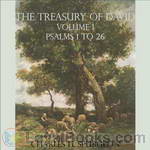 The Treasury of David
The Treasury of David
Charles Spurgeon was a British Particular Baptist preacher who remains highly influential among Christians of different denominations, among whom he is still known as the "Prince of Preachers". In his lifetime, Spurgeon preached to around 10,000,000 people, often up to 10 times each week at different places. He was the pastor of the congregation of the New Park Street Chapel (later the Metropolitan Tabernacle) in London for 38 years.Spurgeon was a prolific author of many types of works. This is the first volume of Spurgeon’s commentary on the Psalms, covering Psalms 1 to 26. | |
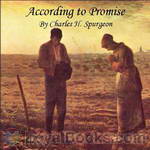 According to Promise, or The Lord’s Method of Dealing with His Chosen People
According to Promise, or The Lord’s Method of Dealing with His Chosen People
Charles Haddon (C.H.) Spurgeon (19 June 1834 – 31 January 1892) was a British Particular Baptist preacher and is still known today as the "Prince of Preachers". He was a strong figure in the Reformed Baptist tradition, defending the Church in agreement with the 1689 London Baptist Confession of Faith understanding, and opposing the liberal and pragmatic theological tendencies in the Church of his day. In his lifetime, Spurgeon preached to around 10 million people, often up to ten times each week at different places... | |
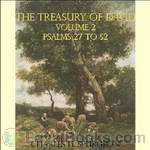 The Treasury of David, Vol. 2 (Abridged)
The Treasury of David, Vol. 2 (Abridged)
Charles Spurgeon was a British Particular Baptist preacher who remains highly influential among Christians of different denominations, among whom he is still known as the “Prince of Preachers”. In his lifetime, Spurgeon preached to around 10,000,000 people, often up to 10 times each week at different places. He was the pastor of the congregation of the New Park Street Chapel (later the Metropolitan Tabernacle) in London for 38 years.Spurgeon was a prolific author of many types of works. His accessible commentaries on the Psalms are a combination of meditation and teaching and are appropriate for anyone wanting to understand these familiar poems on a deeper level... | |
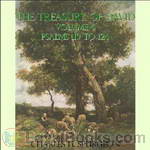 The Treasury of David, Vol. 6 (Abridged)
The Treasury of David, Vol. 6 (Abridged)
Charles Spurgeon was a British Particular Baptist preacher who remains highly influential among Christians of different denominations, among whom he is still known as the "Prince of Preachers". In his lifetime, Spurgeon preached to around 10,000,000 people, often up to 10 times each week at different places. He was the pastor of the congregation of the New Park Street Chapel (later the Metropolitan Tabernacle) in London for 38 years.Spurgeon was a prolific author of many types of works. This sixth volume of Spurgeon’s commentary on the Psalms covers Psalm 119 to Psalm 124. | |
By: Charles Hanson Towne (1877-1949) | |
|---|---|
 Rise and Fall of Prohibition
Rise and Fall of Prohibition
Subtitle: "The Human Side of What the Eighteenth Amendment and the Volstead Act Have Done to the United States" From Chapter 1: "The strange phenomenon of Prohibition, after an appearance amongst us of over three years, is still non-understandable to the majority of a great, and so-called free, people. It is one of the most astonishing manifestations the world has ever witnessed. It came upon us like a phantom, swiftly; like a thief in the night, taking us by surprise. Yet the Prohibitionists will tell you that no one should be amazed, since for years—for almost a century—quiet forces have been at work to bring about this very thing." - Summary by Charles Hanson Towne | |
By: Charles Hardy | |
|---|---|
 The Aural System Being the Most Direct, the Straight-Line Method for the Simultaneous Fourfold Mastery of a Foreign Language.
The Aural System Being the Most Direct, the Straight-Line Method for the Simultaneous Fourfold Mastery of a Foreign Language.
| |
By: Charles Hemstreet (1866-?) | |
|---|---|
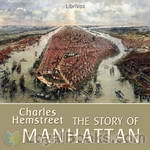 The Story of Manhattan
The Story of Manhattan
The history of New York City is told as a story, in few words. It begins with Henry Hudson's discovery of Manhattan in 1609. And it finishes in 1898 when the island of Manhattan becomes the Borough of Manhattan of Greater New York. | |
By: Charles Howard Hinton (1853-1907) | |
|---|---|
 Fourth Dimension
Fourth Dimension
"Mr Hinton tries to explain the theory of the fourth dimension so that the ordinary reasoning mind can get a grasp of what metaphysical mathematicians mean by it. If he is not altogether successful, it is not from want of clearness on his part, but because the whole theory comes as such an absolute shock to all one's preconceived ideas" - The Bristol Times . This book was published in 1912. The author is attempting to communicate a very complex interweaving of philosophy and mathematics, and it is often difficult to follow his train of thought... | |
By: Charles Hoy Fort | |
|---|---|
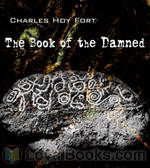 The Book of the Damned
The Book of the Damned
The Book of the Damned was the first published nonfiction work of the author Charles Fort (first edition 1919). Dealing with various types of anomalous phenomena including UFOs, strange falls of both organic and inorganic materials from the sky, odd weather patterns, the possible existence of creatures generally held to be mythological, disappearances of people under strange circumstances, and many other phenomena, the book is historically considered to be the first written in the specific field of anomalistics. – | |
By: Charles Hutton Gregory (1817-1898) | |
|---|---|
 Practical Rules for the Management of a Locomotive Engine in the Station, on the Road, and in cases of Accident
Practical Rules for the Management of a Locomotive Engine in the Station, on the Road, and in cases of Accident
| |
By: Charles James Korinek (1880-) | |
|---|---|
 The Veterinarian
The Veterinarian
| |
By: Charles John Samuel Thompson (1862-1943) | |
|---|---|
 Poison Romance And Poison Mysteries
Poison Romance And Poison Mysteries
A writer and physician, Charles John Samuel Thompson wrote several works on poisons which are still consulted today. He is especially informative on early historical poisons. This book discusses many cases of poisoning, famous and not so, as well as various topics on poisons and poisoning. | |
By: Charles Johnson | |
|---|---|
 A General History of the Pyrates
A General History of the Pyrates
A General History of the Robberies and Murders of the most notorious Pyrates is a 1724 book containing biographies of contemporary pirates. It's author uses the name Captain Charles Johnson, generally considered a pseudonym. The real identity of the author was thought by some scholars to be Daniel Defoe, although this has since been disputed. The publisher Nathaniel Mist or somebody working for him are other suggested authors. In the first volume, "Johnson" sticks fairly close to the available sources, though he embellishes the stories somewhat... | |
By: Charles Kingsley (1819-1875) | |
|---|---|
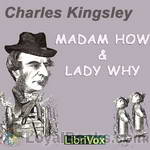 Madam How and Lady Why
Madam How and Lady Why
Did you ever wish you knew how to explain natural phenomena such as earthquakes and volcanoes to your children? Search no more, this book has all the answers (at least all the ones that were known in 1869) and gives them in a pedagogical way. Listed on the Ambleside homeschooling list. | |
 Health and Education
Health and Education
| |
 Alexandria and Her Schools; four lectures delivered at the Philosophical Institution, Edinburgh
Alexandria and Her Schools; four lectures delivered at the Philosophical Institution, Edinburgh
| |
By: Charles Lathrop Pack (1857-1937) | |
|---|---|
 School Book of Forestry
School Book of Forestry
Written by a third-generation timberman, this book discusses what forests are, their primary enemies, and their benefits to others. Additionally, mention is made of the U.S. National Forest system. | |
By: Charles M. (Charles Marcus) Horton (1879-) | |
|---|---|
 Opportunities in Engineering
Opportunities in Engineering
| |
By: Charles Mackay (1814-1889) | |
|---|---|
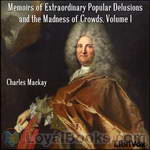 Memoirs of Extraordinary Popular Delusions and the Madness of Crowds
Memoirs of Extraordinary Popular Delusions and the Madness of Crowds
The book chronicles and vilifies its targets in three parts: “National Delusions”, “Peculiar Follies”, and “Philosophical Delusions”.The subjects of Mackay’s debunking include alchemy, beards (influence of politics and religion on), witch-hunts, crusades and duels. Present day writers on economics, such as Andrew Tobias, laud the three chapters on economic bubbles. | |
By: Charles MacLaurin (1872-1925) | |
|---|---|
 Post Mortem: Essays, Historical And Medical
Post Mortem: Essays, Historical And Medical
This 1922 collection of extensive essays comprises well written biographies of a few famous folk. The life narratives include analyses of medical and/or psychological elements in each person’s life. Biographies include Anne Boleyn, Jeanne D’Arc, The Empress Theodora, The Emperor Charles V, Don John Of Austria, Cervantes, Don Quixote , Philip II, Mr. and Mrs. Pepys, Edward Gibbon, Jean Paul Marat, Napoleon I, and Benvenuto Cellini. It concludes with an extended meditation on death. “But there... | |
By: Charles McRae | |
|---|---|
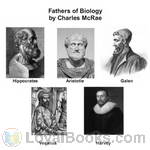 Fathers of Biology
Fathers of Biology
An account given of the lives of five great naturalists (Hippocrates, Aristotle, Galen, Vesalius and Harvey) will not be found devoid of interest. The work of each one of them marked a definite advance in the science of Biology. There is often among students of anatomy and physiology a tendency to imagine that the facts with which they are now being made familiar have all been established by recent observation and experiment. But even the slight knowledge of the history of Biology, which may be obtained from a perusal of this little book, will show that, so far from such being the case, this branch of science is of venerable antiquity... | |
By: Charles Morris (1833-1922) | |
|---|---|
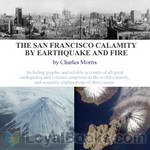 The San Francisco Calamity by Earthquake and Fire
The San Francisco Calamity by Earthquake and Fire
The first half of this book describes the devastating earthquake that hit San Francisco in 1906, and the subsequent destruction caused by fire. Various eyewitnesses and victims give their account on the tragedy. In the second half, a number of different other earthquakes and volcanic eruptions are retold, like the eruption of the Vesuvius that destroyed Pompeij or the explosion of the Krakatoa, together with scientific explanations for the causes of earthquakes and the eruption of volcanos. | |
 Chronicles of America Volume 09 - Colonial Folkways
Chronicles of America Volume 09 - Colonial Folkways
This work according to the subtitle is "a chronicle of American life in the reign of the Georges." It describes land, locales, houses, habits, diversions, learning, religion, labor, and travel. | |
By: Charles Morton Aikman | |
|---|---|
 Manures and the principles of manuring
Manures and the principles of manuring
| |
By: Charles R. Gibson (1870-1931) | |
|---|---|
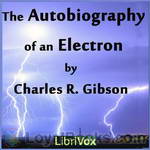 The Autobiography of an Electron
The Autobiography of an Electron
"While many scientific men now understand our place in the universe, we electrons are anxious that every person should know the very important part which we play in the workaday world. It was for this reason that my fellow-electrons urged me to write my own biography. I am pleased to say that my relationship with the scribe who has put down my story in the following pages has been of the most friendly description. I have allowed him to place what he calls "The Scribe's Note" at the beginning of each chapter, but it will be understood clearly that these are merely convenient embellishments, and that I am responsible for the story of my own experiences." (Introduction adapted from the text) | |
By: Charles Shattuck Hill (1868-) | |
|---|---|
 Concrete Construction Methods and Costs
Concrete Construction Methods and Costs
| |
By: Charles Spurgeon (1834-1892) | |
|---|---|
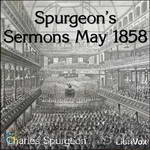 Spurgeon's Sermons May 1858
Spurgeon's Sermons May 1858
Charles Spurgeon was a popular Baptist minister in London in mid-Victorian times; his ministry was highly influential and had a significant effect on many families in London and further afield. It was difficult to find a hall large enough to accommodate the crowd who wished to hear him. At times the Royal Surrey Gardens’ Music Hall was hired to accomodate the Sunday congregation; this could seat 10,000 but large numbers were unable to gain admittance. His world-wide heritage is very much with us today through the many chuches built, missionary work begun, children’s charity founded and theological colleges established as a result of his ministry... | |
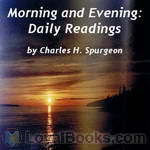 Morning and Evening: Daily Readings
Morning and Evening: Daily Readings
Organized by week, this devotional has a morning and evening meditation for every day of the year. Although these devotions are short in length, they are filled with spiritual goodness. In just a few sentences, Spurgeon is able to convey the wisdom of Scripture with eloquence and purpose. These daily messages provide Christians with the spiritual energy they need to begin and end each day. Spurgeon weaves a verse of Scripture into each devotion, helping readers draw deeper meaning out of the selected passages... | |
By: Charles W. (Charles William) Domville-Fife (1886-) | |
|---|---|
 Submarine Warfare of To-day How the Submarine Menace was Met and Vanquished, With Descriptions of the Inventions and Devices Used, Fast Boats, Mystery Ships
Submarine Warfare of To-day How the Submarine Menace was Met and Vanquished, With Descriptions of the Inventions and Devices Used, Fast Boats, Mystery Ships
| |
By: Charles W. Leadbeater (1854-1934) | |
|---|---|
 Vegetarianism and Occultism
Vegetarianism and Occultism
How does occultism regard vegetarianism? It regards it very favorably, and that for many reasons. These reasons may be divided into two classes: those which are ordinary and physical, and those which are occult or hidden. Let us see in detail why a vegetarian diet is emphatically the purest and the best. | |
By: Charles Warren Stoddard (1843-1909) | |
|---|---|
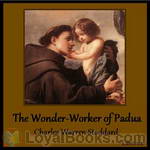 The Wonder-Worker of Padua
The Wonder-Worker of Padua
This is the inspiring story of Saint Anthony of Padua (1195-1231). The son of a wealthy Portuguese family, he was initially ordained a priest of the Canons Regular of Saint Augustine. In 1221, he took up the habit of a poor Franciscan friar and devoted his life to fervently preaching the Word of God. His extensive knowledge of Sacred Scripture and keen insights into its profound spiritual meaning astonished his hearers. To confirm the efficacy of his words, God gave him the gifts of prophecy and of performing miracles, the most memorable of which he worked in Padua in northern Italy, where he resided for many years... | |
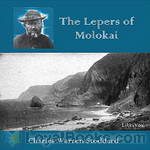 The Lepers of Molokai
The Lepers of Molokai
This is the story of the lepers of Molokai and of the Roman Catholic missionary, Father Damien, who ministered to those who languished in that desolate place, waiting for death to release them from a most intense form of physical and mental suffering. Fr. Damien, born Jozef De Veuster, was a Roman Catholic priest from Belgium and member of the Congregation of the Sacred Hearts of Jesus and Mary, a missionary religious order. He won recognition for his ministry to people with leprosy (Hansen's disease), who had been placed under a government-sanctioned medical quarantine on the remote island of Molokai in the Kingdom of Hawaii... | |
By: Charlotte Campbell Bury (1775-1861) | |
|---|---|
 The Lady's Own Cookery Book, and New Dinner-Table Directory; In Which will Be Found a Large Collection of Original Receipts. 3rd ed.
The Lady's Own Cookery Book, and New Dinner-Table Directory; In Which will Be Found a Large Collection of Original Receipts. 3rd ed.
| |
By: Charlotte Maria Tucker (A. L. O. E.) (1821-1893) | |
|---|---|
 Story Of A Needle
Story Of A Needle
A story told, through the viewpoint of a sewing needle, about family life and siblings. The narration from the needle tells how he was made and witnesses the relationships within the family. The needle also makes friends with a thimble and some scissors. - Summary by Susan Russell | |
By: Charlotte Turner Smith (1749-1806) | |
|---|---|
 Emmeline, the Orphan of the Castle
Emmeline, the Orphan of the Castle
This book was written about 150 years ahead of its time. It tells the story of Emmeline Mobwray who grows up in a dysfunctional family and has to find herself against all odds. Orphaned at a young age, she has to stay alone in a remote castle under the care of a kind housekeeper. But when the kind housekeeper dies, the family starts to take interest in her- to mixed results. Her cousin becomes obsessed with her, much to the displeasure of his wealthy and arrogant parents. Thus, Emmeline is forced to run away from the only home she knew in order to escape his attentions... | |
By: Chesterton, G. K. | |
|---|---|
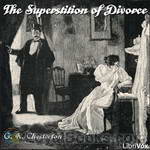 The Superstition of Divorce
The Superstition of Divorce
This short book was written in 1920, and in it Chesterton, with his usual wit and incisive logic, presents a series of articles defending marriage and indicating the weaknesses in divorce. He did this 16 year before the first Christian denomination in the world allowed it’s members to divorce. Till then Christendom was unanimous in standing against it. Chesterton saw clearly the trends of this time, and delivered this defense. | |
By: Christopher Morley (1890-1957) | |
|---|---|
 Mince Pie
Mince Pie
Mince Pie is a compilation of humorous sketches, poetry, and essays written by Christopher Morley. Morley sets the tone in the preface: "If one asks what excuse there can be for prolonging the existence of these trifles, my answer is that there is no excuse. But a copy on the bedside shelf may possibly pave the way to easy slumber. Only a mind "debauched by learning" (in Doctor Johnson's phrase) will scrutinize them too anxiously." | |
 Shandygaff
Shandygaff
A number of most agreeable Inquirendoes upon Life & Letters, interspersed with Short Stories & Skits, the whole most Diverting to the Reader. SHANDYGAFF: a very refreshing drink, being a mixture of bitter ale or beer and ginger-beer, commonly drunk by the lower classes in England, and by strolling tinkers, low church parsons, newspaper men, journalists, and prizefighters. Said to have been invented by Henry VIII as a solace for his matrimonial difficulties. It is believed that a continual bibbing of shandygaff saps the will, the nerves, the resolution, and the finer faculties, but there are those who will abide no other tipple... | |
By: Christopher Wilson (1874-1919) | |
|---|---|
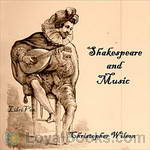 Shakespeare and Music
Shakespeare and Music
Shakespeare's plays are full of music: love songs, comic ditties, serious ballads, and songs for witches and spirits. Over the centuries musicians and composers have also created musical adaptations based on Shakespeare's plays. Composer Christopher Wilson's Shakespeare and Music (1922) documents the musical history of each play across various genres, including opera and incidental music. | |
By: Christy Mathewson (1880-1925) | |
|---|---|
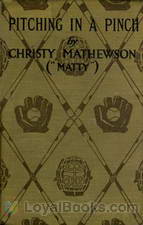 Pitching in a Pinch
Pitching in a Pinch
In this book Mathewson is telling the reader of the game as it is played in the Big Leagues.... It’s as good as his pitching and some exciting things have happened in the Big Leagues, stories that never found their way into the newspapers. Matty has told them. This is a true tale of Big Leaguers, their habits and their methods of playing the game, written by one of them. | |
By: Clara Barton (1821-1912) | |
|---|---|
 The Story of My Childhood
The Story of My Childhood
Clara Barton, founder of the American Red Cross, recalls growing up in early 19th Century Massachusetts. (Introduction by Veronica Jenkins) | |
By: Clara Dillingham Pierson (1868-1952) | |
|---|---|
 Living With Our Children: A Book of Little Essays for Mothers
Living With Our Children: A Book of Little Essays for Mothers
This book is a collection of small essays to help parents better understand their children and offer help to parents in the task of raising them. To quote from the preface, “It is hoped that the very simplicity and homeliness of method of this book may help eager, devoted, perplexed parents to realize that similarity in apparent diversity which underlies the experiences of different people, to perceive more clearly that the small affairs of childhood are really very large in their significance and that our way of dealing with them concerns far more than the present moment.” Summary by SweetHome. | |
By: Clara E. Laughlin (1873-1941) | |
|---|---|
 The Complete Home
The Complete Home
| |
By: Clarence Darrow (1857-1938) | |
|---|---|
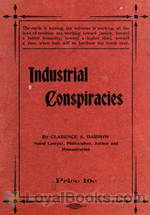 Industrial Conspiracies
Industrial Conspiracies
| |
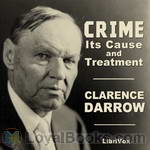 Crime: Its Cause and Treatment
Crime: Its Cause and Treatment
Clarence Darrow was an American lawyer. He remains notable for his wit and agnosticism, which marked him as one of the most famous American lawyers and civil libertarians.In this book, Darrow expands on his lifelong contention that psychological, physical, and environmental influences—not a conscious choice between right and wrong—control human behavior. To my ears (the reader's), the author has a rather simplistic behaviourist view of human behaviour, but he argues his position with wonderful clarity... | |
 Clarence Darrow, Selected Works: 1893-1917
Clarence Darrow, Selected Works: 1893-1917
This is a collection of 8 works by Clarence Darrow written between 1893 and 1917. Clarence Darrow was most noted in his time as an enormously successful defense attorney. Consider that he was the defense attorney at the Scopes Monkey Trial and at the "trial of the century", the Bobby Franks murder trial. He, like Robert G. Ingersoll, William Cowper Brann , William Jennings Bryan , Daniel Webster, etc. was also known as a world-class orator. These collected 8 works include speeches, essays, and public debates. The man had a silver tongue... sharpened to a rapier's edge! | |
By: Clarence Edwords (b. 1856) | |
|---|---|
 Bohemian San Francisco
Bohemian San Francisco
While describing his dining experiences throughout “Bohemian San Francisco,” Clarence Edwords paints an historic panorama of California cuisine with all its cosmopolitan influences. Best of all, he offers tantalizing recipes culled from conversations with the master chefs of 1914 in “The City by the Bay.” | |
By: Claude Grahame-White (1879-1959) | |
|---|---|
 Learning to Fly A Practical Manual for Beginners
Learning to Fly A Practical Manual for Beginners
| |
 Aeroplane in War
Aeroplane in War
"Although it is still a crude machine—in view of the perfected apparatus which is the aim of thoughtful designers—the aeroplane has demonstrated, in a conclusive way, its value as an instrument of war." - Summary by Authors | |
By: Claude H. Miller | |
|---|---|
 Outdoor Sports and Games
Outdoor Sports and Games
The Library of Work and Play, OUTDOOR SPORTS AND GAMESBy CLAUDE H. MILLER, PH.B.INTRODUCTORY The human body a perfect machine--How to keep well--Outdoor sleeping--Exercise and play--Smoking--Walking Suppose you should wake up Christmas morning and find yourself to be the owner of a bicycle. It is a brand-new wheel and everything is in perfect working order. The bearings are well oiled, the nickel is bright and shiny and it is all tuned up and ready for use. If you are a careful, sensible boy you can have fun with it for a long time until finally, like the One Hoss Shay in the poem, it wears out and goes to pieces all at once... | |
By: Clayton Edwards | |
|---|---|
 Treasury of Heroes and Heroines
Treasury of Heroes and Heroines
It would be pleasant indeed to gather the characters of this book together and listen to the conversation of wholly different but interested couples—for this is a book of contrasts and has been written as such. Lives of the most dramatic and adventurous quality have been gathered from all corners of the earth, and from every age in history, in such a way that they may cover the widest possible variety of human experience. The publishers believe that such a book would not be complete without some characters that are no less real because they have lived only in the minds of men... | |
By: Cleveland Moffett (1863-1926) | |
|---|---|
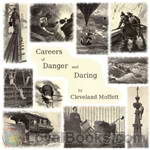 Careers of Danger and Daring
Careers of Danger and Daring
In this volume of adventure the author depicts the lives of certain humble modern heroes whose unconscious courage ordinarily goes unnoticed. Mr. Moffett has chosen unusual and picturesque careers, and has offered dramatic scenes from the lives of the steeple climber, the diver, the balloonist,the pilot, the bridge builder, the fireman, the aerial acrobat, the wild animal trainer, the dynamite worker and lastly the locomotive driver. | |
By: Columbia Accident Investigation Board | |
|---|---|
 Columbia Accident Investigation Board Final Report, Volume 1
Columbia Accident Investigation Board Final Report, Volume 1
In 1981, Columbia became the first spacecraft of its type to fly in Earth orbit and successfully completed 27 missions over more than two decades. During the STS-107 mission, Columbia and its crew traveled more than six million miles in 16 days. The Orbiterʼs destruction, just 16 minutes before scheduled touchdown, shows that space flight is still far from routine. It involves a substantial element of risk, which must be recognized, but never accepted with resignation. The seven Columbia astronauts believed that the risk was worth the reward... | |
By: Confucius (551-479 BC) | |
|---|---|
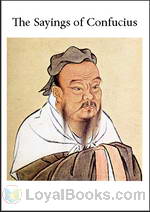 The Sayings of Confucius
The Sayings of Confucius
A treasure trove of wise and pithy sayings, reflections on education, family values, the ideal human being, life and living, politics, art, culture and timeless wisdom, The Sayings of Confucius is indeed an invaluable addition to your bookshelf. Ever since Chinese literary works first began to be translated into European languages, the works of the legendary Chinese philosopher and teacher Confucius, who lived in present day Qufu in the Shandong province of China, more than two thousand years ago, have held universal appeal... | |
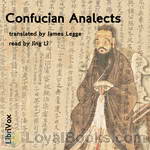 Confucian Analects
Confucian Analects
The Analects, or Lunyu (simplified Chinese: 论语; traditional Chinese: 論語; pinyin: Lún Yǔ; literally "Classified/Ordered Sayings"), also known as the Analects of Confucius, are considered a record of the words and acts of the central Chinese thinker and philosopher Confucius and his disciples, as well as the discussions they held. Written during the Spring and Autumn Period through the Warring States Period (ca. 475 BC - 221 BC), the Analects is the representative work of Confucianism and continues to have a substantial influence on Chinese and East Asian thought and values today... | |
By: Constance Johnson | |
|---|---|
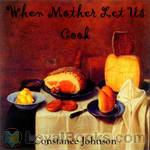 When Mother Lets Us Cook
When Mother Lets Us Cook
A book of simple receipts for little folk with important cooking rules in rhyme together with handy lists of the materials and utensils needed for the preparation of each dish. | |
By: Cornelia Mee | |
|---|---|
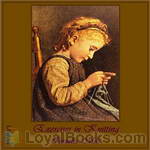 Exercises in Knitting
Exercises in Knitting
Mrs. Mee, her husband, and her sister ran a yarn and needlework import/warehouse business in Bath, England. Her books primarily contain practical everyday items that knit up quickly with the busy homemaker in mind. At this time, published knitting “receipts” did not contain abbreviations and were laborious to use. They were, however, rich in error! Later in her career, due to circumstances of war and the resulting social stress and poverty, many of her knitting books were printed for ladies’ charitable societies, which used her knitting “receipts” to clothe the poor mill workers who were out of work due to the American Civil War and the embargo of cotton. | |
By: Cyril G. (Cyril George) Hopkins (1866-1919) | |
|---|---|
 The Farm That Won't Wear Out
The Farm That Won't Wear Out
| |
 The Story of the Soil; from the Basis of Absolute Science and Real Life,
The Story of the Soil; from the Basis of Absolute Science and Real Life,
| |
By: Cyril of Alexandria (376-444) | |
|---|---|
 That Christ Is One
That Christ Is One
Cyril of Alexandria was the leading voice of Nicene orthodoxy in the Christological controversies between Constantinople (381) and Chalcedon (451). Assuming the mantle of the Cappadotian fathers, he answered the auguments of Nestorius who had changed the liturgy of Constantinople by altering the prayer which referred to Mary as the Mother of God. Although he died seven years before the Council of Chalcedon, his writings and formulations heavily influenced not only Chalcedon, but the entire trajectory of orthodox christological thought. | |
By: Cyrus MacMillan (1880-1953) | |
|---|---|
 McGill and its Story, 1821-1921
McGill and its Story, 1821-1921
| |
By: D. A. Compton | |
|---|---|
 The $100 Prize Essay on the Cultivation of the Potato
The $100 Prize Essay on the Cultivation of the Potato
| |
By: D. B. Casteel (1877-1958) | |
|---|---|
 Behavior of the Honey Bee in Pollen Collecting
Behavior of the Honey Bee in Pollen Collecting
The value of the honey bee in cross pollinating the flowers of fruit trees makes it desirable that exact information be available concerning the actions of the bee when gathering and manipulating the pollen. The results recorded in this manuscript are also of value as studies in the behavior of the bee and will prove interesting and valuable to the bee keeper. The work here recorded was done by Dr. Casteel during the summers of 1911 and 1912. | |
By: D. H. Lawrence (1885-1930) | |
|---|---|
 Widowing of Mrs Holroyd
Widowing of Mrs Holroyd
Mrs. Holroyd is married to a loutish miner, who drinks, apparently patronizes prostitutes, and apparently brutalizes her. When a gentlemanly neighbor makes romantic advances to her, she wishes her husband dead. - Summary by Michele Eaton Cast List: Stage Directions: Scarbo Jack: silverquill Clara: Dtcastid Blackmore: MrsHand Mrs Holroyd: EltonTheSnowman Holroyd: alanmapstone Minnie: shreyasethi Grandmother: Availle Manager: ToddHW Rigley: alanmapstone First Bearer: Salvationist Laura: LaurenEmma3 Second Bearer: ChuckW | |
By: Dale Carnegie (1888-1955) | |
|---|---|
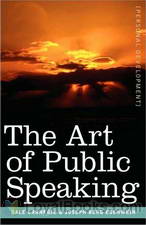 The Art of Public Speaking
The Art of Public Speaking
A great start to shaking off public speaking jitters, socializing and mastering the art of small talk. The principles of public speaking written by Dale Carnegie decades ago in this book are timeless. They are just as effective in working a crowd in today’s society as they were back then. He delves into ways of commanding and charming an audience with the right energy, tone of voice, pitch, pronunciation and vocabulary. Armed with the principles highlighted in this book, you can do more than convey a message to a group of people, you can move them... | |
By: Dame Shirley (d.1906) | |
|---|---|
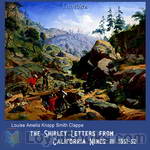 The Shirley Letters from California Mines in 1851-52
The Shirley Letters from California Mines in 1851-52
Louise Amelia Knapp Smith Clappe moved to California from Massachusetts during the Gold Rush of the mid-1800’s. During her travels, Louise was offered the opportunity to write for The Herald about her travel adventures. It was at this point that Louise chose the name “Shirley” as her pen name. Dame Shirley wrote a series of 23 letters to her sister Mary Jane (also known as Molly) in Massachusetts in 1851 and 1852. The “Shirley Letters”, as the collected whole later became known, gave true accounts of life in two gold mining camps on the Feather River in the 1850s... | |
By: Dan McKenzie | |
|---|---|
 City of Din
City of Din
A treatise on the increasing loudness of modern life, including philosophical and scientific discussion of what noise is, how effects us physically, mentally, and socially in cities, on railways, at home, in workplaces, and on battlefields of war. The book concludes with some strong suggestions for protecting ourselves from noise as well as for lessening noise altogether. - Summary by Amelia Chesley | |
By: Daniel Carter Beard (1850-1941) | |
|---|---|
 Shelters, Shacks and Shanties
Shelters, Shacks and Shanties
| |
By: Dante Alighieri (1265-1321) | |
|---|---|
 Convivio
Convivio
Convivio (The Banquet) is a work written by Dante Alighieri roughly between 1304 and 1307. This unfinished work of Dante consists of four trattati, or "books": a prefatory one, plus three books that each include a canzone (long lyrical poem) and a prose allegorical interpretation or commentary of the poem that goes off in multiple thematic directions. The Convivio is a kind of vernacular encyclopedia of the knowledge of Dante's time; it touches on many areas of learning, not only philosophy but also politics, linguistics, science, and history... | |
 Monarchia
Monarchia
The De Monarchia is one of the main works by Dante Alighieri. It is a treatise on secular and religious power, and more specifically on the relationship between secular authority (represented by the Holy Roman Emperor) and religious authority (represented by the Pope). The work is composed of three books, in which Dante condemns the theocratic conception of the power elaborated by the Roman Church and defends that both the Pope and the Emperor derive their power from God, and, that being so, God gave to each power in one certain area of life, which means they should not interfere with each other's power and one should not be considered above the other. | |
 Epistolae, the letters of Dante
Epistolae, the letters of Dante
This volume contains the thirteen letters of the poet Dante Alighieri translated from their original Latin, including the famous and controversial letter to his patron Cangrande della Scala. The letters provide a good deal of context for the reader of Dante regarding his political and philosophical positions. In the final letter, the authenticity of which has been hotly contested by scholars, the author dedicates the Paradiso to the Veronese Cangrande, explains his Divine Comedy's title (then just Comedy), and discusses much of the work's content. | |
By: David Barrows | |
|---|---|
 A History of the Philippines
A History of the Philippines
This book is one of the earliest studies of Philippine history by an American scholar. In preparation for this book, the author conducted ethnological studies of indiginous island tribes after the American war in the Philippines. Since this book was intended for the Philippine reader, the author nicely places the history of the Islands into the broader context of European and American history. | |
By: David Friedrich Strauss (1808-1874) | |
|---|---|
 The Life of Jesus Critically Examined
The Life of Jesus Critically Examined
Strauss was an early pioneer in the ongoing 'Quest of the Historical Jesus' held amongst New Testament scholars, and his Life of Jesus is one of the few landmarks in the field. The first edition of Strauss' book was published in Germany in 1835 when he was only 27 years old, and which by 1840 had gone through four editions. He focused his attention on battling two theological fronts which were current at the time - the traditional Orthodox who believed the miracles in the Gospels were to be taken as literal, yet supernatural, history; and the Rationalists, who believed that the Gospel miracles were all true but could be explained by natural and purely physical causes... | |
By: David Hilbert (1862-1943) | |
|---|---|
 Mathematical Problems
Mathematical Problems
Lecture delivered before the International Congress of Mathematicians at Paris in 1900 and subsequently published in the Bulletin of the American Mathematical Society Vol. 8 (1902), 479-481. | |
By: David Hume (1711-1776) | |
|---|---|
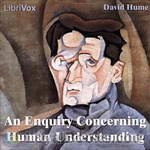 An Enquiry Concerning Human Understanding
An Enquiry Concerning Human Understanding
The Enquiry Concerning Human Understanding is a shortened and simplified version of Hume’s masterpiece A Treatise of Human Nature. It sought to reach a wider audience, and to dispel some of the virulent criticism addressed toward the former book. In it, Hume explains his theory of epistemology, and argues against other current theories, including those of John Locke, George Berkeley, and Nicolas Malebranche. | |
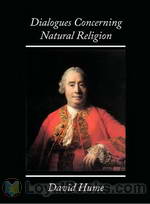 Dialogues Concerning Natural Religion
Dialogues Concerning Natural Religion
In Dialogues Concerning Natural Religion, philosopher David Hume examines whether belief in God can be rational. The work takes the form of a debate between three characters: Cleanthes, who argues that the existence and nature of God can be empirically verified; Demea, who argues that God is completely beyond human knowledge; and Philo, a philosophical skeptic widely thought to represent Hume’s own beliefs. Much of the debate centers around Cleanthes’ presentation of the analogical argument from design... | |
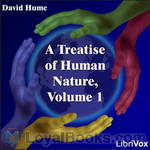 A Treatise Of Human Nature
A Treatise Of Human Nature
This book, published in two volumes called “books” by the author, is a treatment of everything from the origin of our ideas to how they are to be divided. It includes important statements of Scepticism and Hume’s experimental method. Part 1 deals with the nature of ideas. Part 2 deals with the ideas of space and time. Part 3 deals with knowledge and probability. Part 4 deals with skeptical and other systems of philosophy, including a discussion of the soul and personal identity.This is a recording of Volume I (or Book 1). Volume II (which contains Books 2 and 3) is in production at the moment. | |
 History of England from the Invasion of Julius Caesar to the Revolution of 1688, Volume 1A
History of England from the Invasion of Julius Caesar to the Revolution of 1688, Volume 1A
David Hume is one of the great philosophers of the Western intellectual tradition. His philosophical writings earned him lasting fame and renown; his historical writing earned his bread and butter. His "The History of England from the Invasion of Julius Caesar to the Revolution of 1688", published between 1754 and 1764, was immensely popular and Hume wrote that "the copy-money given me by the booksellers much exceeded any thing formerly known in England; I was become not only independent, but opulent... | |
 History of England from the Invasion of Julius Caesar to the Revolution of 1688, Volume 1C
History of England from the Invasion of Julius Caesar to the Revolution of 1688, Volume 1C
David Hume is one of the great philosophers of the Western intellectual tradition. His philosophical writings earned him lasting fame and renown; his historical writing earned his bread and butter. His "The History of England from the Invasion of Julius Caesar to the Revolution of 1688", published between 1754 and 1764, was immensely popular and Hume wrote that "the copy-money given me by the booksellers much exceeded any thing formerly known in England; I was become not only independent, but opulent... | |
By: David Marshall Brooks (1902-1994) | |
|---|---|
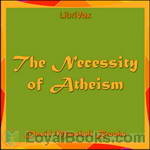 The Necessity of Atheism
The Necessity of Atheism
Plain speaking is necessary in any discussion of religion, for if the freethinker attacks the religious dogmas with hesitation, the orthodox believer assumes that it is with regret that the freethinker would remove the crutch that supports the orthodox. And all religious beliefs are "crutches" hindering the free locomotive efforts of an advancing humanity. There are no problems related to human progress and happiness in this age which any theology can solve, and which the teachings of freethought cannot do better and without the aid of encumbrances. | |
By: David Nunes Carvalho (1848-1925) | |
|---|---|
 Forty Centuries of Inkor, a chronological narrative concerning ink and its backgrounds
Forty Centuries of Inkor, a chronological narrative concerning ink and its backgrounds
| |
By: David Starr Jordan (1851-1931) | |
|---|---|
 Life's Enthusiasms
Life's Enthusiasms
The words in this essay on positive thought sing like those in Whitman's "Leaves of Grass." The author praises joyous living and recommends certain routes to its attainment. He explores schooling (public secondary and the university), travel, and the study of nature as ways to stay buoyant during life's trials. He also praises the power of the arts (literature, music, painting, sculpture) to keep spirits soaring. | |
By: David Walker (1796-1830) | |
|---|---|
 Walker's Appeal
Walker's Appeal
The Appeal grabbed readers’ attention in as dramatic a manner as Walker could have possibly imagined. In her book, Maria W. Stewart and the Roots of Black Political Thought, Kirsten Waters writes about how the pamphlet itself was viewed as dangerous by pro-slavery forces, while Walker actively worked to get his text in the hands of Black readers. He did not direct his writing to White audiences, and in the third edition added a special message to Black readers, saying that: It is expected that... | |
By: Delmer Eugene Croft | |
|---|---|
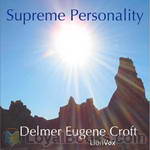 Supreme Personality
Supreme Personality
Life is self-realization. Every birth is divine. We are born anew every morning. My wish is that you may catch the gleam, be freed from limitations and enter upon your boundless possibilities. To bring you into the throne-room of your being, that you may awaken in self-realization, is why I have prepared this course of lessons. Should you give five minutes a day to them, in a year you will know the joy there is in Life, in Power, and in Service. (from the text) | |
By: Derek J. de Solla (Derek John de Solla) Price (1922-1983) | |
|---|---|
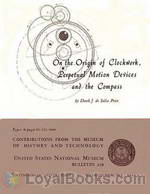 On the Origin of Clockwork, Perpetual Motion Devices, and the Compass
On the Origin of Clockwork, Perpetual Motion Devices, and the Compass
| |
By: Desiderius Erasmus (1466/69-1536) | |
|---|---|
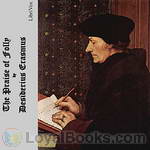 The Praise of Folly
The Praise of Folly
The Praise of Folly (Greek title: Morias Enkomion (Μωρίας Εγκώμιον), Latin: Stultitiae Laus, sometimes translated as In Praise of Folly, Dutch title: Lof der Zotheid) is a satirical essay written in 1509 by Desiderius Erasmus of Rotterdam (1466/69-1536). It is considered one of the most influential works of literature in Western civilization and one of the catalysts of the Protestant Reformation.It starts off with a satirical learned encomium after the manner of the Greek satirist... | |
 The Education of Children
The Education of Children
| |
By: Digital Equipment Corporation | |
|---|---|
 Preliminary Specifications: Programmed Data Processor Model Three (PDP-3) October, 1960
Preliminary Specifications: Programmed Data Processor Model Three (PDP-3) October, 1960
| |
By: Dillon Wallace (1863-1939) | |
|---|---|
 The Lure of the Labrador Wild
The Lure of the Labrador Wild
The Lure Of The Labrador Wild is a account of a expedition by Leonidas Hubbard, an adventurer and journalist to canoe the system Naskaupi River - Lake Michikamau in Labrador and George River in Quebec. His companions on this journey were his friend, New York lawyer Dillon Wallace and an Indian guide from Missannabie, George Elson. From the start, the expedition was beset with mistakes and problems. Instead of ascending the Naskaupi River, by mistake they followed the shallow Susan Brook. After hard long portaging and almost reaching Lake Michikamau, with food supplies running out, on September 15 at Windbound lake, they decided to turn back... | |
By: Dion Clayton Calthrop (1878-1937) | |
|---|---|
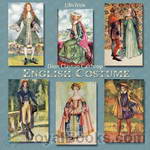 English Costume
English Costume
The world, if we choose to see it so, is a complicated picture of people dressing and undressing. The history of the world is composed of the chat of a little band of tailors seated cross-legged on their boards; they gossip across the centuries, feeling, as they should, very busy and important. As you will see, I have devoted myself entirely to civil costume—that is, the clothes a man or a woman would wear from choice, and not by reason of an appointment to some ecclesiastical post, or to a military calling, or to the Bar, or the Bench. Such clothes are but symbols of their trades and professions, and have been dealt with by persons who specialize in those professions. | |
By: Doane Robinson (1856-1946) | |
|---|---|
 Sioux Indian Courts An address delivered by Doane Robinson before the South Dakota Bar Association, at Pierre, South Dakota, January 21, 1909
Sioux Indian Courts An address delivered by Doane Robinson before the South Dakota Bar Association, at Pierre, South Dakota, January 21, 1909
| |
By: Don C. (Don Carlos) Seitz (1862-1935) | |
|---|---|
 The Tryal of William Penn and William Mead for Causing a Tumult at the Sessions Held at the Old Bailey in London the 1st, 3d, 4th, and 5th of September 1670
The Tryal of William Penn and William Mead for Causing a Tumult at the Sessions Held at the Old Bailey in London the 1st, 3d, 4th, and 5th of September 1670
| |
By: Donald Alexander Mackenzie (1873-1936) | |
|---|---|
 Myths and Legends: Myths of Babylonia and Assyria
Myths and Legends: Myths of Babylonia and Assyria
Donald Alexander Mackenzie was a Scottish journalist and prolific writer on religion, mythology and anthropology in the early 20th century. His works included Indian Myth and Legend, Celtic Folklore and Myths of China and Japan.As well as writing books, articles and poems, he often gave lectures, and also broadcast talks on Celtic mythology.This volume deals with the myths and legends of Babylonia and Assyria, and as these reflect the civilization in which they developed, a historical narrative has been provided, beginning with the early Sumerian Age and concluding with the periods of the Persian and Grecian Empires... | |
By: Donald Ogden Stewart | |
|---|---|
 Perfect Behavior
Perfect Behavior
A humorous guide to manners and etiquette for ladies and gentlemen in a social "crises," published in 1922. (Introduction by Samanem) | |
By: Dora C. C. L. (Dora Cathrine Cristine Liebel) Roper (1873-) | |
|---|---|
 Food for the Traveler What to Eat and Why
Food for the Traveler What to Eat and Why
| |
By: Doris Stevens (1892-1963) | |
|---|---|
 Jailed for Freedom
Jailed for Freedom
A first-hand account of the 1913-1919 campaign of American suffragists, detailing their treatment at the hands of the courts, and the true conditions of their incarceration. | |
By: Dorothy Canfield Fisher (1879-1958) | |
|---|---|
 Home-Maker
Home-Maker
The Knapp family seems as though they ought to be happy, yet hidden frustrations are tearing them apart under the surface. As the family breadwinner, Lester Knapp drags himself reluctantly to his job each day, miserable in the harsh world of commerce and business, longing for a quiet life at home with his books. Meanwhile, Evangeline Knapp is admired as an excellent housewife, yet the limited challenges of that life are driving her to perfectionism and boredom. The Knapp children are affected by their parents' unhappiness, the youngest child acting out in frequent tantrums, and the two older children tense and nervous... | |
By: Dorothy Osborne (1627-1695) | |
|---|---|
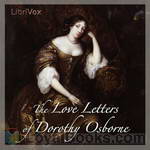 Love Letters of Dorothy Osborne
Love Letters of Dorothy Osborne
A lively, interesting and important collection of 17th century love-letters written by an English lady, against the background of the Civil War and the Restoration | |